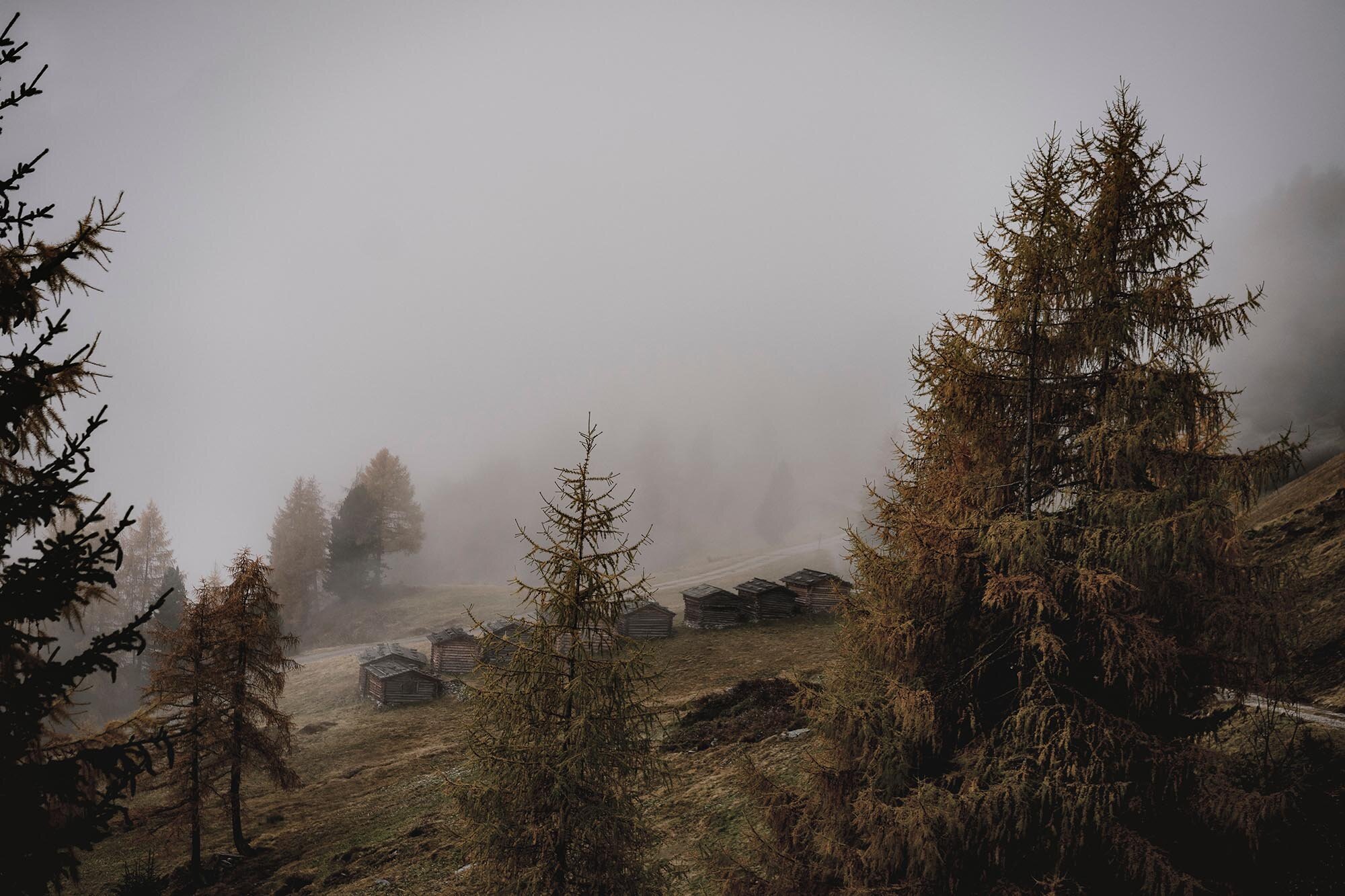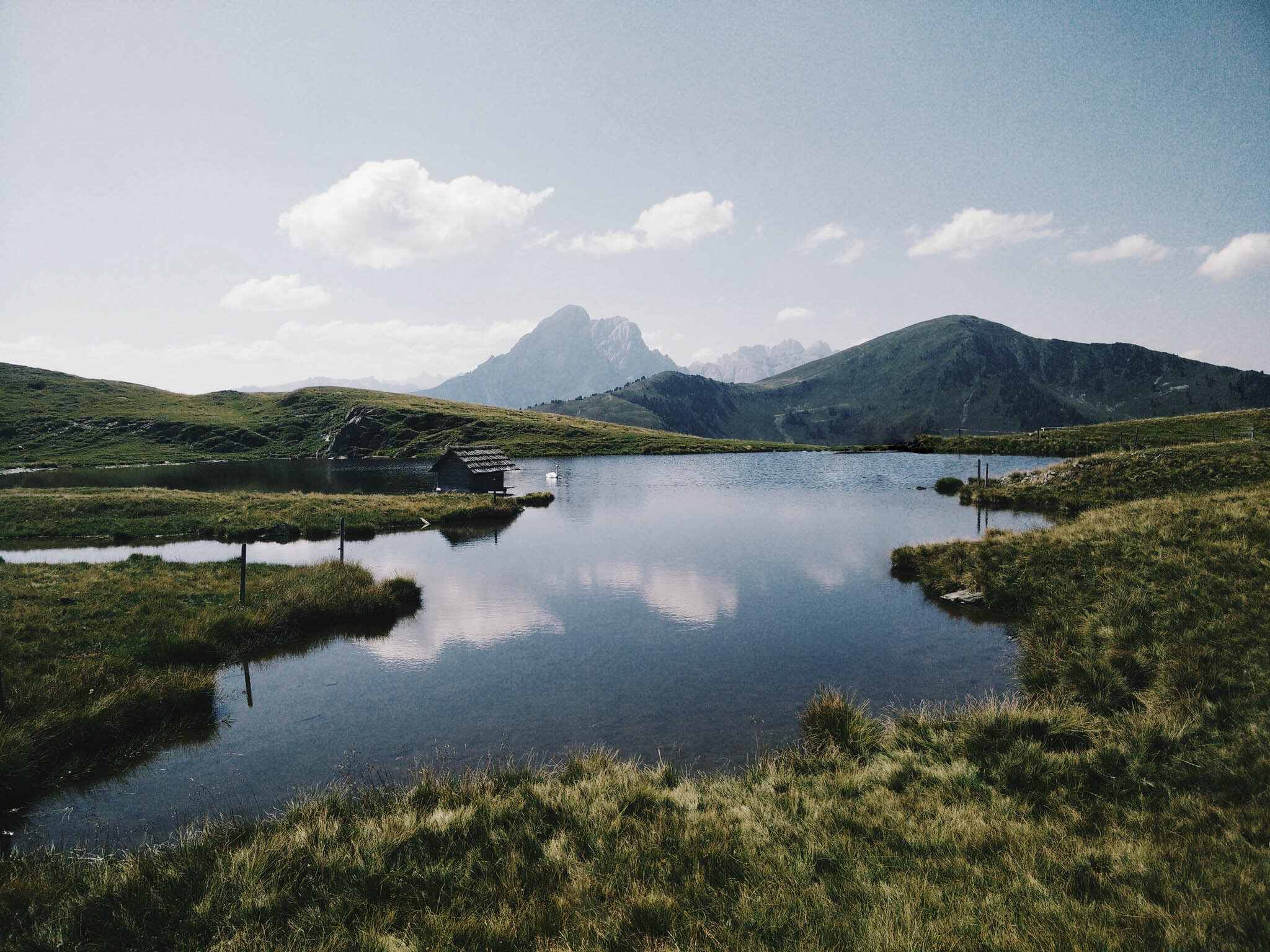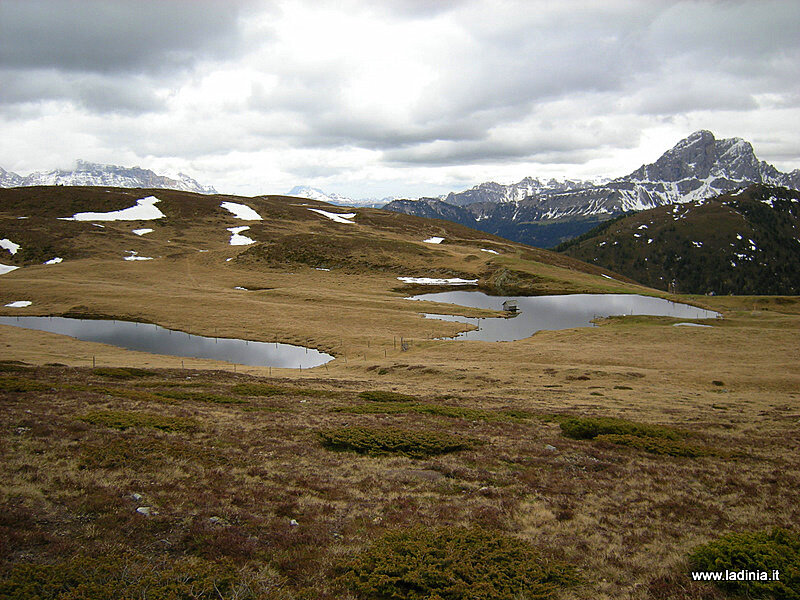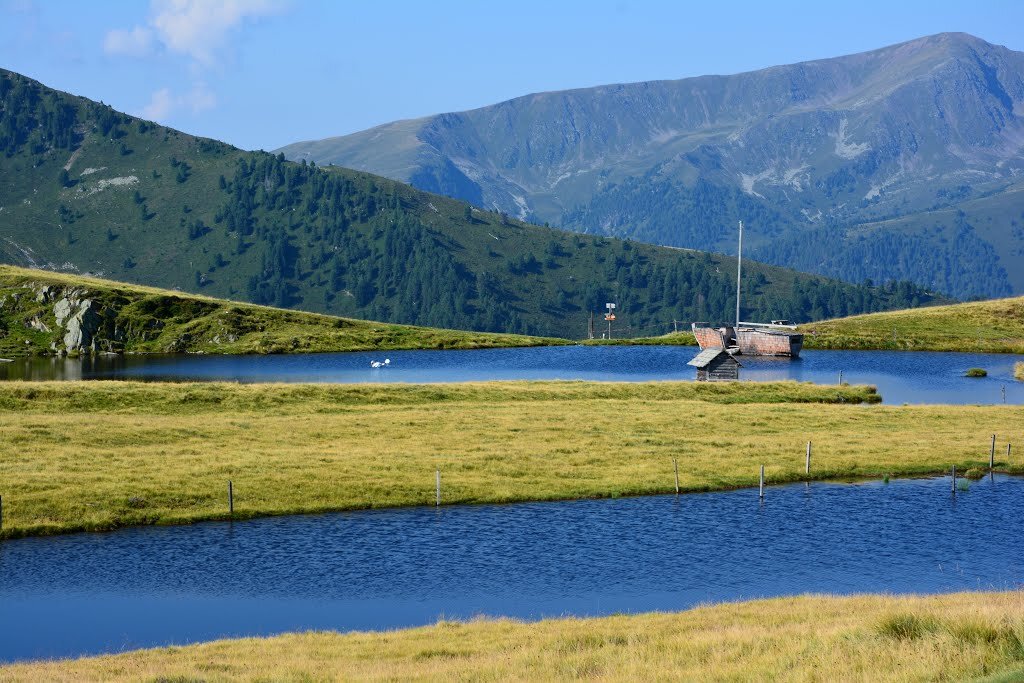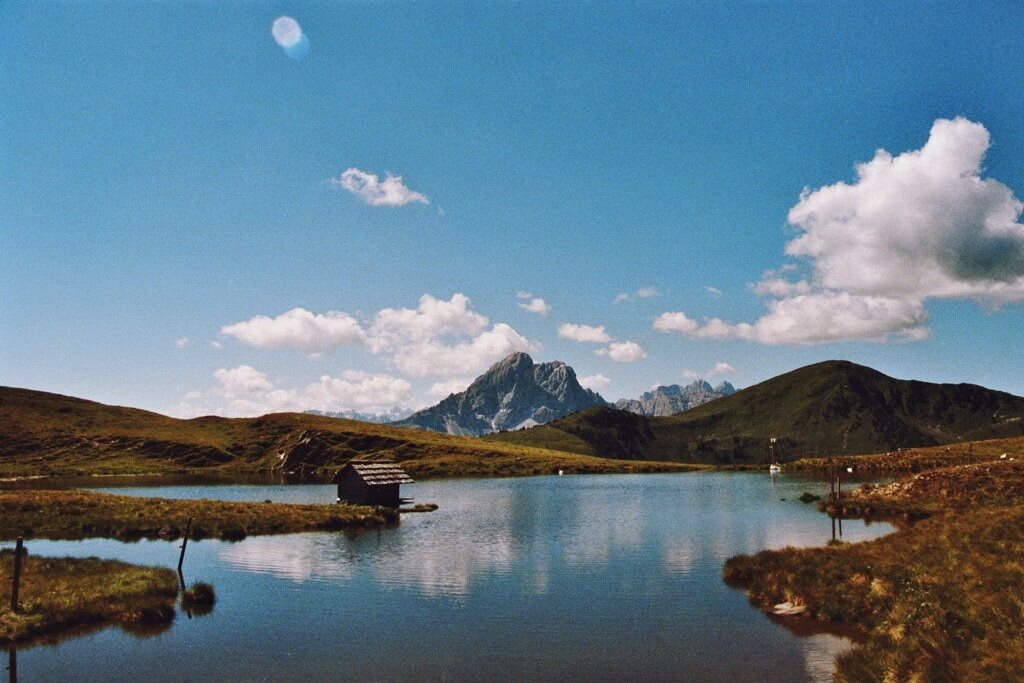Location LÉ DE MUNT DA RINA.
The paths that arise from the Isarco Valley, the Pusteria Valley and the Badia Valley connect here and on the nearby Giogo del Colletto, revealing the breathtaking view of Sass dla Crusc and Sass de Putia. This place also represents the metaphorical border between the Ladin language, spoken in Val Badia, and German, which is spoken in the rest of the area. Focusing on the linguistic and etymological theme: the name ‘Rina’ originates from the Rhaeto-Romanic origin of Ladin, a Neo-Latin or Romance language. In addition to the Ladin language, which is also common in other municipalities of the valley , the territory of Rina also preserves other important testimonies that the inhabitants of thousands of years ago left us: the cup marks. These are mysterious semi-circular hollows, like cups, carved into boulders or rock surfaces. The cup-marks, like the votive pyres (Putia meadows) and legends (Fanes) that we will see later, are the fruit of symbolic thinking, which was a very important element in the emergence of oral narratives, art, and religions.
-
-
https://goo.gl/maps/BrX7tgVMgtaToWUa9
It can only be reached on foot in about an hour's walk from the Munt da Rina hut.
-
Artworks of the past editions:
-
〉 Ladin
Da chiló vëigon fora dër bel Sas dla Crusc, Pütia, la Val Badia y la Val de Puster. Nia dalunc é n pice lech romantich le protagonist: le Le da Rina. Chiló incunton escurjionisć che vëgn dala Val dl Isarch, dala Val de Puster y dala Val Badia y an passa insciö ia le confin danter le raiun olach’al vëgn baié ladin, la Val Badia, y le raiun olach’al vëgn baié todësch.
〉 Italiano
Qui, e sul vicino Giogo del Colletto, si raccordano i sentieri che salgono dalla Valle Isarco, dalla Val Pusteria e dalla Val Badia e si ha una vista mozzafiato sul Sass dla Crusc e sul Sass de Putia. Il luogo rappresenta, inoltre, il metaforico confine tra il ladino, parlato in Val Badia, e il tedesco, parlato nel resto della zona. Rimanendo in tema: il toponimo Rina testimonia l’origine retoromanza del ladino che era stato influenzato nella sua struttura e nel vocabolario dalle lingue non romanze, il celtico e il retico. Ancora oggi vi sono sia toponimi che nomi che hanno questa origine, ad esempio: barantl – pino cembro, dascia - rami delle piante di pino, roa - frana, crëp - montagna, aisciöda – primavera, nida - latticello, liösa – slitta, dlasena – bacca.
Il territorio di Rina conserva, inoltre, anche alcune importanti testimonianze che gli abitanti di migliaia di anni fa ci hanno lasciato: le coppelle. Cioè misteriosi incavi semicircolari - come delle coppe scavate nella roccia – ricavati su massi o superfici rocciose. In Val Badia gli storici locali hanno raccolto notizie di come questi incavi fossero usati, anche in tempi recenti, come recipienti in cui veniva posto del cibo per gli uccellini, o delle cavità in cui introdurre del burro da far sciogliere al calore del sole allo scopo di cibarsene con maggior agio. Va ricordato a questo proposito che tra le tradizioni badiote si cita la singolare consuetudine di porre nelle coppelle le prime bacche selvatiche allo scopo di propiziare una ricca raccolta.
〉 Deutsch
Hier hat man einen herrlichen Blick auf Kreuzkofel, Peitlerkofel, Gadertal und Pustertal. Nicht weit vom Gipfel erweckt ein romantischer kleiner See namens Lé de Rina die Aufmerksamkeit: Hier treffen Wanderer aus dem Eisacktal, dem Pustertal und dem Gadertal aufeinander. Zugleich markiert die Gegend die Sprachgrenze zwischen dem im Gadertal gesprochenen Ladinisch und dem deutschen Sprachbereich.


